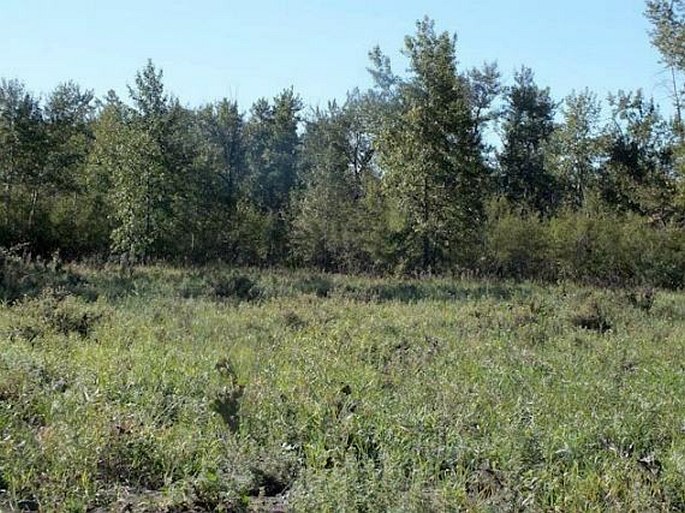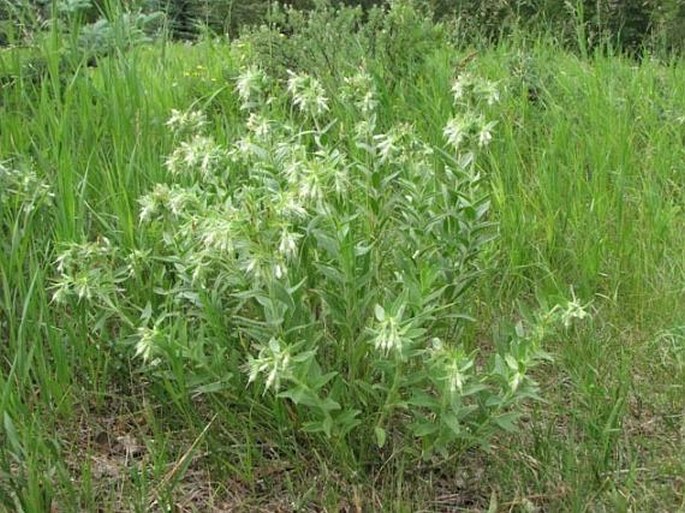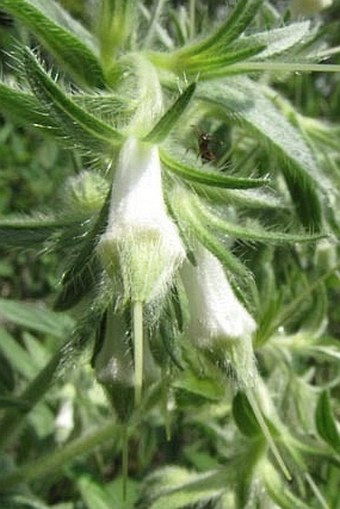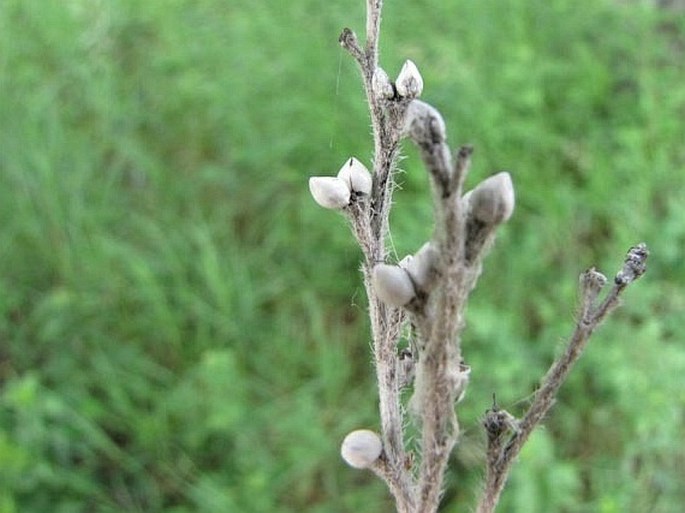Syn.: Lithospermum occidentale (Mack.) Weakley, Witsell et D. Estes, Onosmodium occidentale Mack., Onosmodium molle subsp. occidentale (Mack.) Cochrane, Onosmodium molle var. occidentale (Mack.) I. M. Johnst.
Family: Boraginaceae Juss.

Distribution: North American species. Found Appalachian mountains in the east of US and from southeast of Canada, across American prairies to the east of Rocky Mountains to Alberta and Utah. The nominate variety is found in southern states of US, var. hispidissimum in the east and var. occidentale in the west and it is the most common. Variety var. subsetosum is found only in a few states in the south (from Tennessee to Oklahoma).
Ecology: Dry and sunny grasslands, shrubbery, margins of forests, rocky or sandy soils. Blooms in June and July.

Description: Perennial herb, 75–100 cm tall, stem erect, branched at top, hairy. Leaves alternate, sessile, lanceolate, to 55 mm long, 14 mm wide, smooth edges, prominently 5–7-ribbed, hairy, gray-green. Inflorescence scorpiod cyme, leafy, flowers pentamerous, tube-shaped, yellowish to greenish white, hairy, 12–20 mm long, style exserted. Fruit is nutlet, shiny, white to brown, 4 nutlets per flower.
Threat and protection: This variety is considered endangered in Kentucky and Tennessee.
Use: Native tribes smoked the mixture of dried False Gromwell and Common Mullein (Verbascum thapsus) to treat madness and to protect against witchcraft spells.
Note: North American genus Onosmodium is kept separate by American botanists from the relative genus of Lithospermum due to their morphological differences. Present molecular phylogenetic studies can include this species in Lithospermum (our pictures) as Lithospermum occidentale (Mack.) Weakley, Witsell et D. Estes. As these studies are still tentative due to its incompleteness, we are still using the traditional taxonomy.
Generic name implies similarity to genus Onosma which occurs in the Old World. The specific name refers to the Spanish name of today’s San Antonio, Texas.





These images were taken in Canada, Alberta, Calgary, Carburn Park (summer and autumn 2013).


